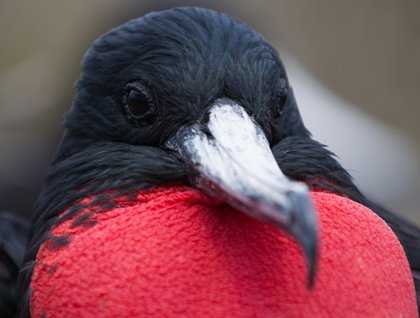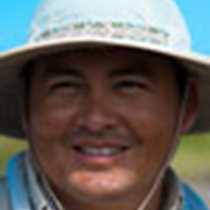It is our second day exploring the wonders of the Galapagos Islands and our enthusiasm for knowing more about this pristine place is indescribable. Today we visited North Seymour, a small island formed by a sudden uplift of the ocean platform. We also visited Rabida Island, also known as Jervis Island named in honour of the 18th-century British admiral John Jervis. Both islands are intriguing due to the different microclimates and adaptation that the species had to evolve in order to succeed in this harsh environment.
Our first outing took place along the rocky shoreline of North Seymour. The loop trail is quite difficult at times because of the lava boulder sections that took us through bushy vegetation, cactus and small palo santo trees. The 1.2 miles/2 km in length trail rewarded us, as North Seymour is home to sea lions, iguanas and different kind of birds. In the rocky stretch we found sea birds nesting, such as swallow-tailed gulls, blue-footed boobies and both magnificent and great frigate birds. This time of year most of these species are rearing their chicks, but we were also were able to observe a few birds displaying their courting behavior as well some incubating eggs. After our visit to this unique place we weighed anchor immediately and started sailing west towards Rabida Island.
Rabida is an unusual place in many aspects. Since 1975 the Galapagos National Park Service has been working in different eradication programs, which have been successfully performed, such as the eradication of introduced goats. The terracotta island also known as Jervis has a red sand beach that is used by sea lions. The red sand is due to the iron oxide and was formed by the erosion of the cinder cones. A saltwater lagoon is found behind the beach, a great place for birders because we can find different species of waders. Our first afternoon outing was for aquatic activities, snorkeling along the rocky coastline for experienced snorkelers, as well as from the beach for beginners. Both places provided a captivating experience to our guests. The rich water of Galapagos creates a mosaic of fish from the Panamic, Peru-Chilean and Indo-Pacific provinces. Sea lions were the attraction, as we witnessed their underwater performing. Sea turtles and marine iguanas feeding on green algae were also part of the underwater quest.
Late in the afternoon we all headed to shore for a walk. Land birds such as mockingbirds and finches, which shaped evolutionary science forever by inspiring Charles Darwin in the concept of natural selection and survival of the fittest, were all over the small palo santo forest. Galapagos hawks, frigate birds and pelicans were also seen from some viewpoints on the island. The outing concluded along the red-sand beach with some sightings of sea lions and shore birds while the sun was setting behind the towering volcanoes of Isabela Island.




